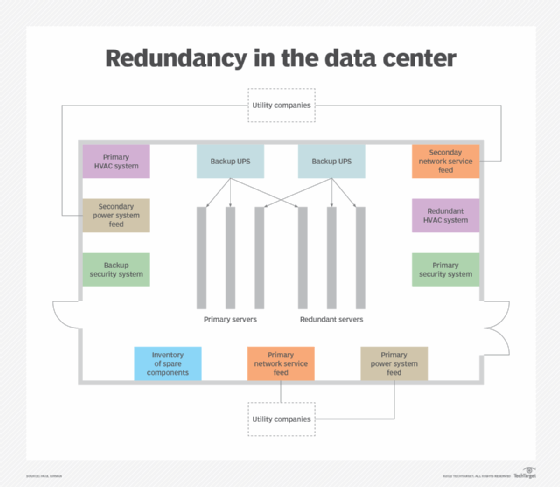If a Company Goes Bust Who Pays Redundancy? Legal Insights for UK Worker
Wiki Article
Discovering the Operational Dynamics of Firm Redundancy and Its Long-Term Sustainability

Redundancy Strategies for Business Connection
In order to ensure continuous operations, services need to execute efficient redundancy techniques for service connection. Redundancy in this context refers to the replication of vital parts or features within a system to mitigate the impact of prospective failures. By including redundancy techniques, organizations can boost their durability against disturbances created by various variables such as all-natural catastrophes, devices failings, or cyber-attacks.
One usual redundancy approach is the implementation of backup systems and data storage space remedies. This entails producing duplicates of crucial data and systems that can be activated in case of a main system failure. Furthermore, companies can develop redundant communication channels and source of power to preserve connection and operations during unforeseen occasions.
Moreover, cross-training staff members to carry out numerous functions within the firm can offer as a beneficial redundancy technique. If essential personnel are not available due to health problem or other factors, this ensures that essential tasks can still be carried out even. In general, effective redundancy methods are vital for businesses to support functional continuity and lessen the impact of prospective disturbances.
Impact of Redundancy on Business Resilience
Provided the crucial duty redundancy strategies play in ensuring business connection, exploring the effect of redundancy on business resilience comes to be critical for understanding the alternative operational dynamics of a firm. Business resilience refers to an entity's capability to adjust to disruptions, recoup from troubles, and change when required while maintaining core features. Redundancy, when purposefully applied, can considerably add to enhancing an organization's strength when faced with unforeseen obstacles. By having back-up systems, workers, or procedures in position, business can much better stand up to shocks and continue procedures with marginal disruption.In addition, redundancy can reinforce employee morale and confidence, knowing that there are contingency strategies in area to resolve unforeseen scenarios. This feeling of security can result in enhanced efficiency and an extra favorable workplace. In addition, redundancy can foster technology and creativity within a company as employees feel equipped to take calculated dangers, recognizing that there is a safeguard to support them in instance of failing. Overall, the effect of redundancy on business resilience is extensive, shaping the long-term sustainability and success of a firm.
Stabilizing Performance and Adaptability in Redundancy
Achieving an unified balance between operational effectiveness and flexible adaptability is a pivotal obstacle in the critical release of redundancy within companies. Reliable procedures are crucial for preserving efficiency and cost-effectiveness, making certain that sources are used optimally. Nonetheless, too much focus on effectiveness alone more info here can bring about strength, making it challenging for organizations to adjust to unpredicted modifications or challenges. On the other hand, versatility enables companies to respond nimbly to evolving circumstances, fostering innovation and resilience. Yet, way too much versatility without visit their website a strong operational foundation can cause inadequacies and incongruity.To stabilize efficiency and adaptability in redundancy planning, organizations need to very carefully analyze their operational demands, market characteristics, and calculated objectives. Eventually, finding the best equilibrium between performance and flexibility is important for constructing a resistant and sustainable company in the face of uncertainty.
Long-Term Sustainability With Redundancy Planning
To make sure enduring stability and stability, companies should strategically straighten their redundancy planning with long-term sustainability goals, thus integrating operational effectiveness with flexible flexibility. Lasting sustainability through redundancy planning involves greater than just temporary cost-cutting procedures. It requires a detailed calculated approach that expects future challenges and possibilities. Firms should view redundancy not as a responsive solution to instant issues however as a positive method for long-term success. By incorporating redundancy planning with sustainability objectives, companies can produce a durable framework that can withstand numerous market fluctuations and internal modifications.
Proactive Procedures for Sustainable Company Procedures
Just how can firms proactively improve their functional sustainability for long-term success? Applying proactive actions is vital for firms intending to make certain sustainable operations. One key strategy is to buy technology and advancement to improve processes, decrease waste, and remain competitive out there. Taking on lasting practices such as decreasing energy intake, minimizing carbon impact, and enhancing source Source utilization can not only benefit the atmosphere however also result in cost savings in the long run.Additionally, promoting a culture of constant improvement and discovering within the organization can enhance versatility to altering market conditions and consumer demands. Urging staff member involvement in decision-making processes and providing possibilities for specialist growth can increase morale, productivity, and overall performance. Developing clear objectives, checking crucial efficiency indicators, and on a regular basis assessing development are vital parts of aggressive sustainability administration.
Collaborating with vendors, consumers, and other stakeholders to advertise sustainable methods throughout the supply chain can produce a ripple result of favorable effect - redundancy pay if company goes bust. By taking positive steps towards functional sustainability, companies can build strength, drive development, and protect their lasting success in an ever-evolving organization landscape
Final Thought

In the world of organizational monitoring, the critical implementation of firm redundancy stands as an essential yet elaborate technique that requires a fragile equilibrium in between operational effectiveness and long-lasting stability. By exploring the operational dynamics that underpin firm redundancy and examining its broader effects for business resilience and versatility, a nuanced understanding of exactly how redundancy approaches can form the future trajectory of a company begins to unravel.Offered the important role redundancy methods play in guaranteeing organization connection, checking out the impact of redundancy on business durability becomes essential for recognizing the all natural functional dynamics of a company. Generally, the influence of redundancy on business resilience is extensive, shaping the long-lasting sustainability and success of a firm.
In verdict, recognizing the functional characteristics of business redundancy is critical for making sure long-term sustainability.
Report this wiki page